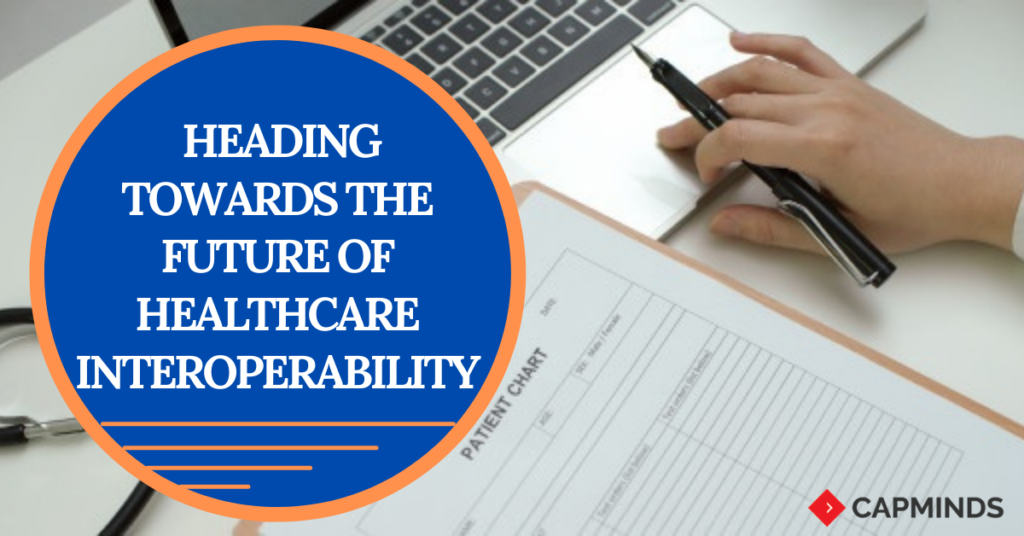Heading Towards The Future Of Healthcare Interoperability
As
the technology continues to evolve day by day due to the impact of the COVID-19
pandemic, healthcare organizations are gaining access to advanced healthcare
tools to seamlessly exchange health data and for better healthcare information
management. While this kind of development offers fruitful benefits to
physicians, the data generated by this technology is continuously leaving a
great impact while health information exchanges.
Nowadays
patients are more concerned about their care and also showing interest in
understanding their healthcare treatment plans, medication histories, and more.
As the patients move from one physician to the next, they expect their health
data to be readily available for sharing and exchanging.
Based
on the recent report from the Center for Connected Medicine, nearly 4 out of 10
health systems are successfully sharing their data with other systems. For more
healthcare organizations, cloud APIs and interfaces present a major challenge
in achieving healthcare interoperability.
As a result, many of the top tech companies are working towards finding
the right solution to achieve true interoperability. So how the future of
interoperability would be? Have a look at why interoperability means a lot and
how to improve patient safety by leveraging FHIR.
The
Future Of Healthcare Interoperability
Interoperability
in medical care likewise referred to as healthcare data interoperability
incorporates the advancements utilized in inpatient care to empower the sharing
of information to meet the objectives of delivering quality healthcare. The
current absence of interoperability in medical care can compromise patient
safety leads to clinician burnout and also results in huge revenue loss. A recent report showed that the lack of
healthcare interoperability costs the U.S. healthcare system more than $30
billion per year.
RELATED: HIDDEN SECRETS OF HEALTHCARE INTEROPERABILITY CHALLENGES
As you would
expect, the absence of interoperability in medical services additionally
prevents improvement, which might be the greatest missed opportunity for a
healthcare interoperability environment. Pioneers in medical services face
difficulties getting to information, integrating into highly-customized
environments, and scaling semantic interoperability across a variety of data
landscapes. So, the innovators frequently avoid the healthcare market since
developing interoperability in healthcare services is very challenging.
While the
medical care industry has gained progress forward to characterize
interoperability guidelines and assist suppliers with understanding what does
interoperability implies, there is still a lot of work to be done as new
difficulties face the healthcare system brought about by the COVID-19 pandemic.
Healthcare
Interoperability In Improving Patient Safety
The interoperability of electronic health records offers clinicians the simplicity that the PHI they input is much secured. At the point when PHI is gone into an interoperable framework, overseers of the framework can pinpoint users, track their activities as they input information, and successfully deal with their access rights, getting quiet information and securing their protection simultaneously. It additionally can help those getting care by diminishing or taking out patient-confronting tasks, for example, filling out various forms or re-clarifying their clinical history. This could spike quicker and more exact treatment accordingly.
RELATED: HERE’S HOW INTEROPERABILITY CAN IMPROVE PATIENT CARE
Leveraging
FHIR
If
all healthcare organizations upheld application programming interfaces (APIs)
that utilized Fast Healthcare Interoperability Resources (FHIR) to store and
access information, developers would just have to compose clinical decision
support programs once. The program could run any place that the framework was
agreeable with FHIR standards.
Guaranteeing
healthcare organizations hold fast to safe practices is a top industry need,
and far and wide interoperability could help suppliers across the business
exchange information and implement similar best practices with the help of
clinical decision support (CDA) tools.
Similarly, accomplishing seamless healthcare interoperability may help healthcare firms to reduce mistakes and prevent medical errors. Expanding the utilization of FHIR across the business is critical to empowering health IT advancement and permitting suppliers to use Artificial Intelligence(AI) and other blossoming innovations for improved clinical decision making.
Final
Thoughts
Healthcare interoperability will continue to grow as new technological advancements are booming day by day in the healthcare sector. To achieve true interoperability, healthcare organizations and IT leaders should make use of advanced applications to communicate and exchange patient health data efficiently and securely. CapMinds healthcare interoperability solutions – HL7 FHIR integration services help the healthcare practices to access and standardize health data seamlessly.
Are you ready to learn more about CapMinds interoperability solutions?

 Author: Pandi Paramasivan
Author: Pandi Paramasivan

